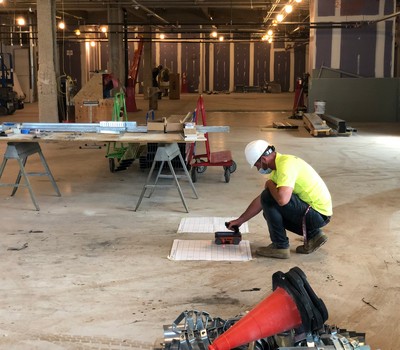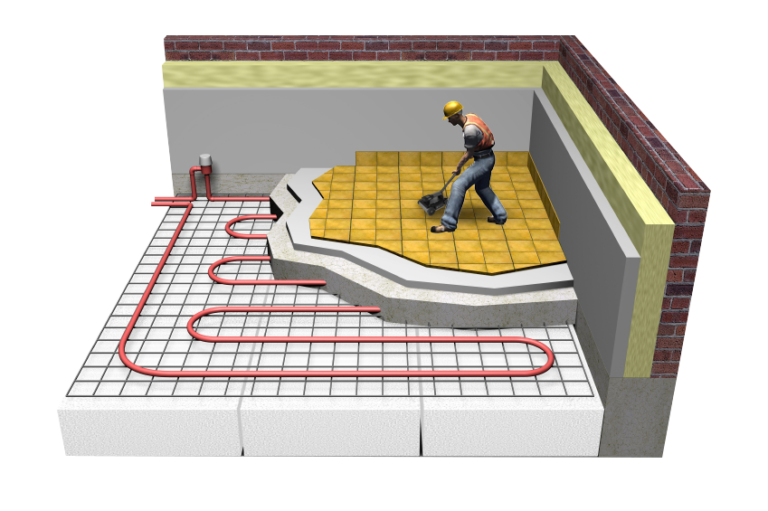Discover Hidden Obstacles with RainierGPR Concrete Scanning Technology
Wiki Article
Making The Most Of Effectiveness and Reducing Risks: The Duty of Concrete Scanning in Building
In the realm of building and construction, where precision and safety are critical, the use of concrete scanning technology has actually ended up being a crucial device for job supervisors and designers alike. By using advanced scanning techniques, building and construction groups can browse complex atmospheres with heightened efficiency while minimizing possible threats that might endanger both spending plans and timelines.Importance of Concrete Scanning
Concrete scanning plays an essential duty in guaranteeing the structural integrity and security of building projects by properly spotting embedded objects and possible risks within concrete structures. By utilizing numerous scanning technologies such as ground-penetrating radar (GPR) and electromagnetic induction, building teams can identify rebar, post-tension wires, avenues, and various other concealed obstacles prior to drilling, reducing, or coring into concrete. This proactive approach assists avoid costly damages, injuries, and job delays that might occur from mistakenly striking these objects throughout building and construction activities.In addition, the exact mapping of ingrained things ensures the efficient implementation of building and construction plans, lessening the danger of mistakes and ensuring the durability and longevity of the constructed environment. Ultimately, investing in concrete scanning services adds to the total success and safety of construction projects.

Advanced Modern Technology in Construction
Offered the enhancing need for precision and performance in building methods, the assimilation of innovative modern technology has become instrumental in enhancing job end results and ensuring ideal safety procedures. BIM allows for much better cooperation among stakeholders, boosted visualization of the task, and boosted decision-making throughout the building process. The implementation of Increased Truth (AR) and Virtual Fact (VIRTUAL REALITY) modern technologies in construction style and preparation stages allows stakeholders to visualize the final product, determine prospective issues, and make necessary modifications prior to building and construction starts.
Benefits of Item Mapping
The utilization of things mapping technology in building and construction projects uses a plethora of advantages that improve job preparation and implementation. Among the essential advantages of object mapping is its capacity to give precise and comprehensive information regarding the location of below ground utilities, architectural components, and various other objects within the construction website. This details is critical for making sure that excavation and drilling activities are performed safely and successfully, reducing the threat of damages to existing facilities.Moreover, item mapping innovation allows construction groups to create precise 3D models of the website, permitting for far better visualization of the job and enhanced control amongst different trades - RainierGPR Concrete Scanning. This improved spatial recognition aids to determine possible clashes and conflicts early in the drawing board, lowering the need for pricey rework and hold-ups during construction
In addition, object mapping can likewise enhance the paperwork process by providing electronic records of the site before, throughout, and after building. These records act as beneficial recommendations for future maintenance and remodelling jobs, ultimately improving the long-term performance and sustainability of the developed environment.
Stopping Expensive Blunders
Object mapping modern technology's duty resource in building extends beyond improving project preparation and execution to encompass an important facet: avoiding expensive mistakes. By using sophisticated concrete scanning strategies, building and construction teams can determine prospective risks such as rebar blockage, post-tension cords, or voids within concrete frameworks. Finding these concerns early on aids in avoiding pricey errors throughout the construction process. As an example, striking a post-tension cable during drilling can bring about architectural damage, delays, and increased costs for fixings. Furthermore, properly mapping out existing energies underground can protect against accidental damages throughout excavation, saving both time and cash. In addition, by making use of item mapping innovation, construction teams can make sure that building components are set up in the right areas, decreasing the likelihood of rework or retrofitting as a result of lost components. On the whole, the positive use concrete scanning modern technologies in construction tasks substantially reduces the risk of mistakes and ultimately adds to cost savings and job efficiency.
Ensuring Safety And Security and Top Quality
To support the highest possible requirements of safety and security and quality in building and construction projects, the application of concrete scanning innovation plays a crucial role. By using sophisticated scanning methods such as ground-penetrating radar (GPR) and electro-magnetic induction, construction teams can find possible hazards hidden within concrete structures prior to starting any work. This proactive method not only minimizes the risk of accidents on the construction website yet likewise makes sure the the original source architectural integrity of the building.Concrete scanning likewise aids in verifying the positioning of rebar, avenues, and post-tension wires, assuring that these components are properly placed based on the layout requirements. This accuracy in finding essential components aids protect against mistakes throughout the building and construction procedure, eventually causing a higher quality completed product. this website Furthermore, by recognizing any type of abnormalities or incongruities within the concrete beforehand, required adjustments can be made without delay, decreasing the possibility of rework and costly hold-ups.
Essentially, concrete scanning technology acts as a valuable device in securing both the safety of building workers and the overall top quality of the developed environment. Its capability to find potential threats and guarantee adherence to layout requirements makes it an essential possession in modern-day building techniques.

Conclusion
In verdict, concrete scanning plays a crucial function in optimizing performance and minimizing risks in construction projects. By using sophisticated innovation for object mapping, potential costly mistakes can be avoided, guaranteeing safety and quality of the last framework. It is essential for building and construction firms to focus on using concrete scanning to boost performance, alleviate dangers, and deliver premium cause their projects.Concrete scanning plays an essential role in making certain the architectural stability and safety of construction jobs by accurately detecting embedded things and prospective hazards within concrete frameworks. The application of Increased Fact (AR) and Online Truth (VR) technologies in building design and preparation stages makes it possible for stakeholders to visualize the last product, recognize prospective concerns, and make needed adjustments prior to construction starts. By employing advanced concrete scanning techniques, building groups can identify prospective threats such as rebar blockage, post-tension cables, or spaces within concrete frameworks. Generally, the positive use of concrete scanning modern technologies in construction jobs considerably lessens the risk of mistakes and inevitably contributes to cost financial savings and task efficiency.
To maintain the highest possible standards of safety and quality in building tasks, the execution of concrete scanning technology plays an essential role.
Report this wiki page